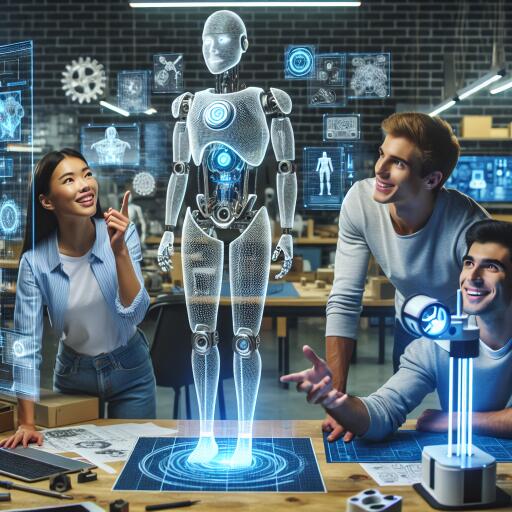OpenAI Reportedly Considering Building Humanoid Robots, Could Be Integrated With Its AI Models
OpenAI, the prominent artificial intelligence company, is reportedly contemplating the creation of humanoid robots. This potential expansion highlights a significant evolution of its current artificial intelligence software offerings. The company is allegedly in discussions about entering the robotics sector with a focus on crafting human-like machines.
The inclination towards robotics isn’t fresh for OpenAI. Previously, the company had an active robotics division, which it discontinued prior to the launch of its sophisticated AI model, GPT-3. Despite this setback, OpenAI continues to demonstrate interest in the robotics field by investing in various startups through its venture initiatives.
Recent reports illuminate OpenAI’s ambitions in developing humanoid robots. Sources close to the company suggest that OpenAI has revisited this path, considering projects that involve robots designed to resemble humans. Nevertheless, it remains uncertain whether these discussions have progressed beyond the initial stages or if a detailed plan guiding the development of human-like robots has been established.
In earlier years, OpenAI demonstrated commitment to robotics from the very start of its operations, although this division never saw the release of any tangible products or prototypes. In 2021, co-founder Wojciech Zaremba, who spearheaded the robotics division, announced its cessation. During a podcast, he noted the primary obstacle was a deficiency in training data, which impeded the enhancement of the systems to a sufficiently advanced level of intelligence.
Despite this previous discontinuation, there has been speculation of renewed interest. Reports from within the year suggest that OpenAI has advertised several positions aimed at recruiting research engineers for a new robotics team. These roles purportedly involve training multimodal large language models to “unlock fresh capabilities for our partners’ robots.”
The term “partners” likely alludes to several robotics startups that have been beneficiaries of OpenAI’s financial backing. Early in 2024, the company invested in Figure AI, supported by notable figures and companies like Jeff Bezos, Microsoft, Nvidia, and Intel during the funding round. Additionally, 1X Technologies has seen OpenAI’s involvement, particularly in integrating GPT AI models into its robotic systems. November also saw an investment in Physical Intelligence, a startup focused on developing AI-driven systems that endow robots with human-like perception and dexterity.
Although the details remain limited, making it challenging to ascertain OpenAI’s complete vision with respect to humanoid robots, the company’s trajectory suggests a strategic alignment with its latest o3 series of AI models that emphasize advanced reasoning. It’s plausible that OpenAI envisions robots capable of executing a variety of real-world tasks with mere verbal instructions, potentially revolutionizing operations across factories and multiple other environments.
This move marks a significant intersection between artificial intelligence and robotics, where OpenAI might aim to harness its sophisticated AI to endow machines with a high-caliber understanding and operational capacity. As developments unfold, the potential for such groundbreaking technology could redefine the interaction between humans and machines.









